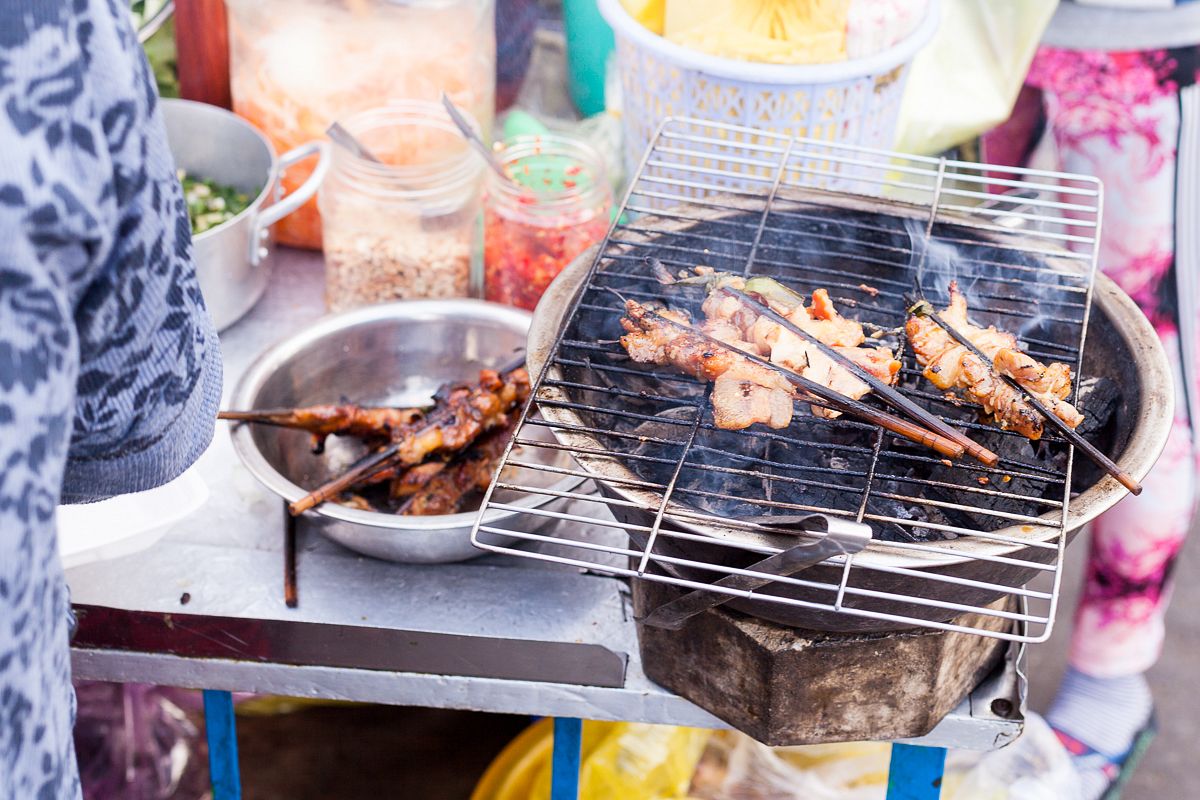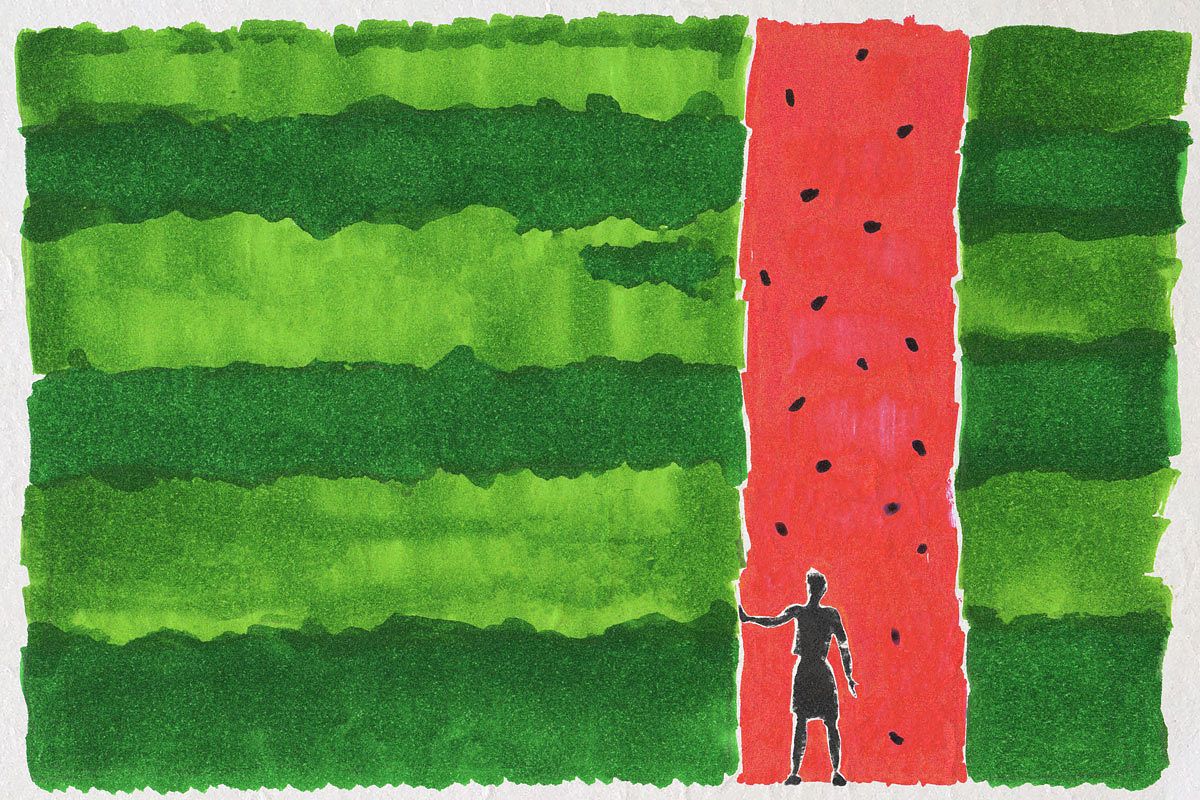If you’ve been around a traditional Vietnamese household during Tet, you have probably noticed the presence of gargantuan, child-sized, dark green watermelons on the altar. These behemoths are both intimidating and delicious; that is, if one remembers to cut them up during the holiday and not leave them out for months like my mom did one year. However, not many know that the origin story behind this juicy berry – yes, watermelons are, indeed, berries – is rooted in a fascinating folk tale that takes place in ancient Vietnam during the days of the Hung Kings.
There are currently many versions of the tale about how watermelons came to be a common crop in Vietnam, but it’s impossible to verify which one is closest to the truth because it was so long ago. Despite the existence of some geographical locations mentioned in the story, take the following tale with a grain of salt.
Once upon a time, during his reign, the 18th Hung King had an adopted son whom he named Mai An Tiem. Some sources suggest that Tiem wasn’t adopted but bought from a foreign merchant when he was just seven years old to be a house servant, and only after Mai An Tiem grew up to be a well-adjusted, intelligent and a mild-mannered young adult did the king decide to adopt him.
However, as young Tiem became more favored by the king, whom he showered with wealth and luxury, he reportedly changed into an ungrateful, haughty brat. The straw that broke the camel’s back was when he said of the favors bestowed by the king: "Của biếu là của lo, của cho là của nợ,” a proverb many took to mean “receiving gifts is being indebted [to the giver]”.
The king, of course, was incensed by the allegedly offensive remark, and if the course of world history is any indication, you don’t want to anger a king. He banished Mai An Tiem’s entire family, including his wife and children, to a desolate island.
The island was secluded and filled with strange flora and fauna. Having been used to the opulence of the palace, the couple initially struggled in the wilderness. However, an optimist at heart, Mai An Tiem kept a bright outlook and made use of his wits in hopes of making a life on the strange island. These were probably the characteristics that lead to Mai An Tiem being Vietnam’s very first food start-up entrepreneur, but more on that later.
Tiem and his wife, Ba, went paleo with their food and sustenance, an understandable dietary choice given that they were practically sent back to the Neolithic era. Every day, Tiem went foraging for wild vegetables and fruits while his wife took to the sea to find sea urchins, clams and other types of fish.
Little did they know that their fate would change forever. One day, during one of his usual foraging trips to the forest, he noticed a flock of birds feasting on a fruit on the beach. Tiem thought to himself: “If these birds can eat this fruit, maybe humans can, too.” The risk paid off because the unidentified fruit was sweet and juicy with red flesh and a white rind.
That, ladies and gentlemen, was Vietnam’s very first watermelon. Tiem decided to save the seeds to plant in his garden. After months, his efforts proved to be fruitful – get it? – and the family had another steady source of food to complement their paleo lifestyle. After a few harvests, the watermelon plantation was very successful and churned out a surplus of humongous fruits every year.
Tiem’s homegrown watermelon eventually reached mainland Vietnam, however, there are different accounts of how this happened. One source suggested that Tiem was a marketing marvel and decided to carve his name on the fruits and released them into the sea. Some came into contact with locals, who quickly jumped on the watermelon bandwagon because of the fruit’s sweet, refreshing taste and also realized that Mai An Tiem didn’t perish after being exiled but instead turned out to be a successful farmer.
Another account mentions a shipwreck that brought visitors to Tiem’s watermelon paradise. Upon tasting the magical new fruit, the castaways were instantly in love. The family gradually started a successful business trading their crop for amenities from the other side of the sea, such as furniture, clothing and rice.
Regardless of how Mai An Tiem’s agricultural products found their way to land, the king eventually heard about his adopted son's survival. He also loved the melons. Surprised by his estranged son’s success and robust business, the king decided to forgive Tiem and invited his household back to settle down in the kingdom once again. The way to a man’s heart is, indeed, through his stomach.
Once Mai An Tiem was back in the country, he continued his watermelon legacy by giving out seeds to local farmers. Thus, gardens and plantations throughout the country began to see the presence of sprawling vines and ludicrously sized melons.
According to Soha, the island where Mai An Tiem was exiled is a real location. However, in today’s Vietnam, centuries of sedimentation have created sandy routes linking the island with Thanh Hoa province in northern Vietnam. Nga Phu and Nga An Communes in the province’s Nga Son District make up most of the island in modern Vietnam. Some deem watermelons grown in this locality to be the best in the country. It’s a rather bold claim, but experts do agree that Nga Son soil is very suitable for growing the fruit due to its sandy nature.

Nga Son District in Thanh Hoa province. Image via Google Maps.
However, cultivating watermelons is unfortunately no longer a Nga Son tradition: farmers have forgone their ancestor's cash crop for more convenient options that have short harvest cycles and better yield. Dan Tri reports that in 2013 there was only one farmer who still grew the fruit in that district: 67-year-old Hoang Van Hue, who might be the true descendant of Mai An Tiem.















